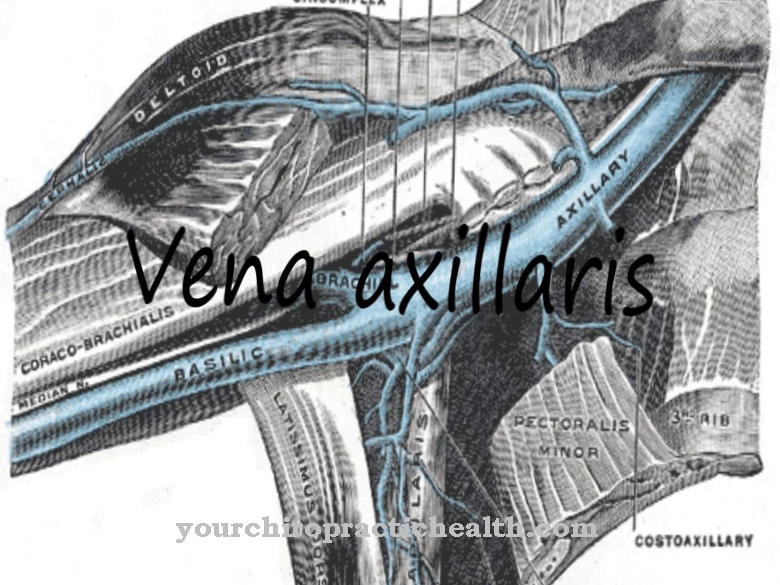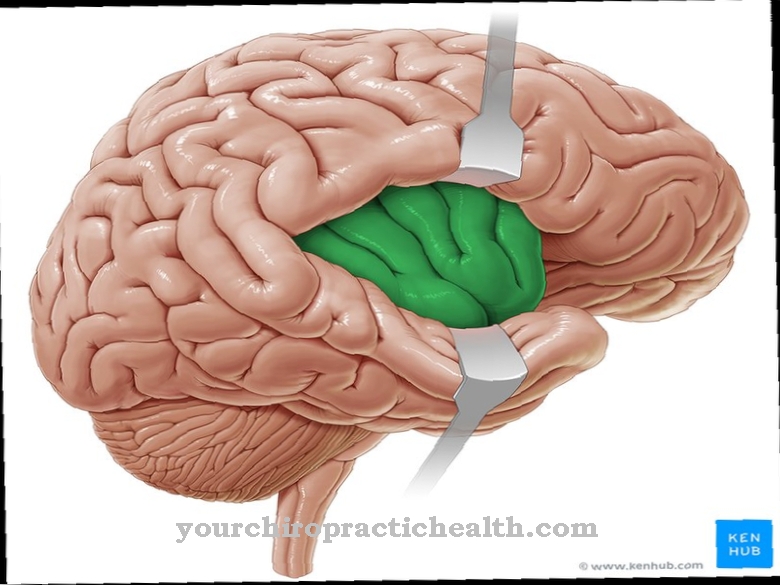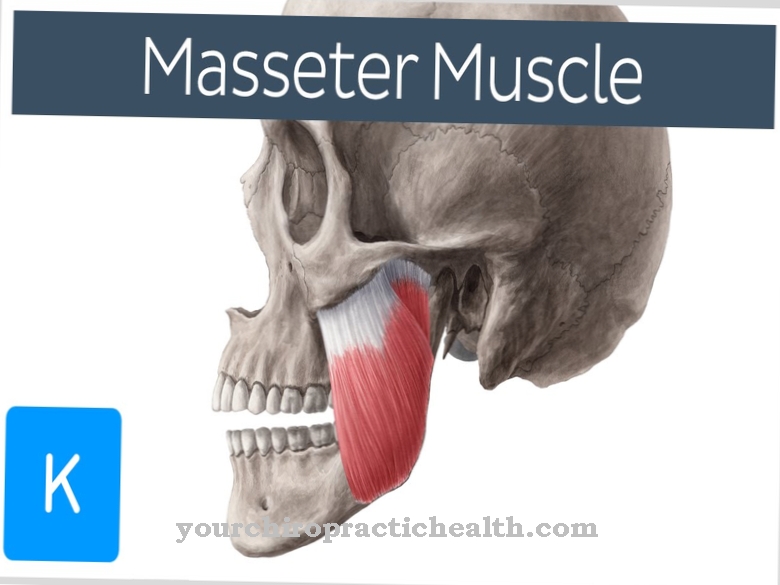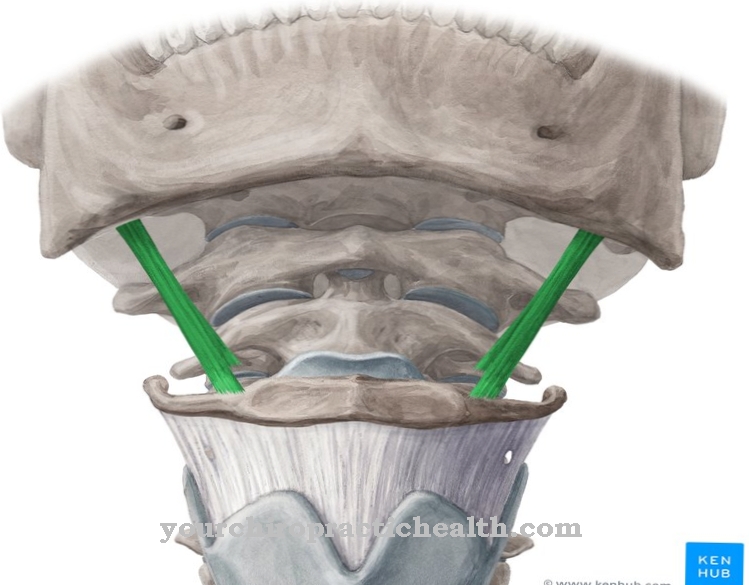The word leg can describe two things: In the old language every bone was a "leg" (as in "bones"), today the term is actually only used to describe the lower extremity of the human body. The following is a brief overview of the anatomy of the leg, which can help to better understand the various ailments and diseases that probably affect almost everyone in the course of their life.
What are the legs
The leg In the broader sense, referred to in medicine and anatomy as the "lower extremity" (as opposed to the arm as the "upper extremity), it can be easily divided into four sections:
Pelvic girdle (also belonging to the trunk, depending on the definition), thigh, lower leg and foot. Three large joints connect these four sections with one another, but there are many other small joints, especially on the foot.
Anatomy & structure
From an anatomical point of view, it is committed leg (if you leave the pelvis outside) made up of 30 bones: the thighbone (femur) is the longest and largest bone in the human body, the lower leg consists of the shinbone (tibia), which bears the main weight, and the fibula which laterally carries part of the load and has a slight flexibility in movement; in between there is the kneecap (patella), which enables gentle movement of the knee joint and is the starting point of large thigh muscles.
On the foot, the tarsal bones ankle and heel bone, as well as the navicular bone, the three cuneiform bones and the cuboid bone are added. The end of the foot is formed by the five metatarsal bones and the toe bones, of which there are two on the big toe and three on the other toes.
Bone points on the leg that can be felt from the outside provide information on structure and function and are also of crucial importance for the doctor in the physical examination. From top to bottom these are above all the "trochanter (major)" as a palpable cusp just below the hip joint (reference point for syringes), the kneecap (can luxate, i.e. jump out of its compartment and then usually hang to the side), the outer cusps of the The tibia and the edge of the tibia (well supplied with nerves and therefore very sensitive to pain), the cusp at the upper end of the fibula (on the outside just below the knee joint, very susceptible to pressure damage due to a superficial nerve course), the inner and outer ankles (medical "malleolus") , swells when the ligament ruptures and is then no longer palpable), the heel bone (painful on pressure in the "heel spur"), the outer metatarsal bones (tendon attachment pain and fractures) and the individual toe bones.
All other bones are surrounded by muscles, more or less fatty tissue and skin and are protected by them. The vascular and nerve tracts are also largely well padded in the depths of the soft tissue, as pressing them off or even severing them would have fatal consequences for the part of the leg below. Superficially palpable pulses are only found in the groin, in the hollow of the knee, below and behind the inner ankle and on the back of the foot.
Functions & tasks
The function of the Leg To put it simply is the movement of the body, in the case of humans even when walking upright. In order to make this possible, a carefully thought-out interplay between foot muscles (especially when standing on one leg), leg muscles, pelvic muscles, spine and sometimes the arms as well, is required.
People usually learn this interaction in the course of the first year and a half of life, after which it happens automatically so that we do not have to concentrate on it all the time. Basically, it is a very complex work that the brain does here as a matter of course: nerve impulses from the skin, muscles and joints constantly give feedback about their tactile receptors, joint position, muscle stretch state and so on.
Much occurs as an automated reflex at the spinal cord level and is "sent back" directly to the place of origin as a motor response, but much is also modulated and regulated by the cerebellum and cerebrum, where not only stored movement patterns are implemented, but of course also the eye and organ of equilibrium have a weighty little word "to have a say".
Illnesses & ailments
This is precisely why it is so important that the nerves of the Leg work well: If they are disturbed by long-term elevated blood sugar levels (diabetes), injuries (broken bones with a ruptured nerve) or pressure damage (herniated discs, damage to position), people lose their sense of touch.
In diabetics, this happens first on the sole of the foot, it tingles constantly, and small injuries are no longer noticed and permanently lead to major soft tissue damage and bone infections. In the case of a herniated disc, sensory and motor failures are in the foreground, as the intervertebral disc in the lumbar spine squeezes the entire nerve supplying the leg at its exit point from the spinal cord.
The blood supply to the leg is also often a cause for concern and plagues many people, especially at an advanced age: arteriosclerosis, caused by age, smoking, malnutrition, obesity and high blood pressure, damages not only the coronary arteries (heart attack) and brain vessels (stroke) but also the blood supply to the leg and leads to the so-called "intermittent claudication" PAD (peripheral arterial occlusive disease):
After just a few steps, those affected get pain in the leg, as the muscles can no longer be supplied with sufficient blood, and therefore stay in each shop window for a few minutes until the pain subsides. In more advanced stages, parts of the leg can also die off.
In addition to these two main "internal" diseases of the leg, there are of course a lot of broken bones, torn muscle fibers, torn ligaments and overuse complaints that affect the leg and especially young people and athletes. In older age, on the other hand, osteoarthritis of the hip and knee joint is a frequent companion that can lead to considerable pain and impairment of mobility and quality of life.













.jpg)

.jpg)
.jpg)











.jpg)